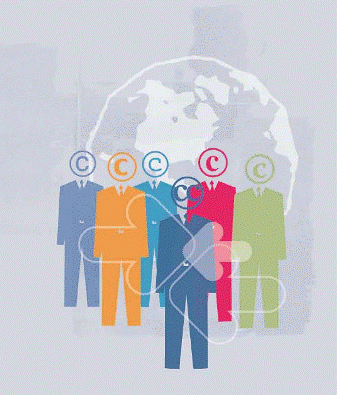Motivation is one the most important factors that determine work performance. There many definitions of motivation, one of them is: the process of arousing and sustaining goal-directed behavior.
Here we are going to analyze some motivation theories:
· Internal: Within the individual
· Process: Interaction
· External: Environment
A need is a state or condition within an individual that generates movement towards some outcome or reward:
· Intrinsic motivation: Internal needs
· Extrinsic motivation: External incentives
Here we are going to analyze some of the most influent motivational theories:
ü Maslow`s Need Hierarchy: This theory classifies people needs into five categories: Physiological needs, needs of security and safety, social needs, needs of self-esteem and the needs of self-actualization. Maslow mentions that people always want to satisfy the higher rank need which is self-actualization.
ü Douglas McGregor developed the “Theory X and Theory Y”: This theory separates employees in two categories, those who are in the X theory are predisposed to negligence, they avoid work and responsibilities. Those who are part of the Y theory consider normal to make efforts at work, and they are motivated by the rewards because they are in the two higher levels of the hierarchy of needs.
ü ERG Theory (Existence, Relatedness, Growth): In this theory workers pursue multiple needs simultaneously.
ü Mc Clelland´s Needs Theory: There are three acquired needs: Achievement, Power and Affiliation.
ü Frederick Herzberg Two Factors Theory: This theory analyzes the sources of professional satisfaction and dissatisfaction. Satisfaction depends on the content of the work and dissatisfaction is determined by deficiencies in the work environment.
ü My Two Cents Worth: You have the right to be dissatisfied about your work conditions and as employee or manager you have responsibilities aimed at improving the work conditions.
ü Social Exchange and Equity Theory: There are three categories of exchange between individuals and organizations which are: Committed, Calculated and Alienated.
ü Inequity Theory made by Stacy Adam: People are motivated when they see themselves in risk, or in a position they believe is unfair.
ü Expectancy Theory also named VIE (Valence, Expectancy, Instrumentality): This theory establishes a connection between the employees` motivation and the certitude of their expectances, the results of the performance are means to satisfy a need. Key elements: effort, performance and reward.
Managers must understand that all motivation theories are not equally good or useful and that there are differences among nations.
In multicultural organizational contexts what could be a good strategy to keep people motivated towards a common task?
In a Multicultural Organization managers cannot assume they understand all employees’ needs. They should recognize the variety of needs that motivate employee behavior and ask employees for input to better understand their needs. Also it is important to have in mind that there is not just one useful or correct motivation theory that is applicable to all organizations.
In this specific case I would recommend Social Exchange and Equity theory because Social exchange theory is a perspective that explains social change and stability as a process of negotiated exchanges between parties and Equity Theory attempts to explain relational satisfaction in terms of perceptions of fair or unfair distributions of resources within interpersonal relationships. Under this Theory “employees seek to maintain equity between the inputs that they bring to a job and the outcomes that they receive from it against the perceived inputs and outcomes of others” (John Stacey Adams, 1965). The belief is that people value fair treatment which causes them to be motivated to keep the fairness maintained within the relationships of their co-workers and the organization.
For all the concepts given above I can conclude that with the use of these Motivation Theories employees in a Multicultural Organization would be motivated towards a common task because all of them want to have an equal treatment and they are willing to have stability and motivation by negotiated exchanges.
· Nelson, Debra L. and Quick, James Campbell. 2010. OrganisationalBehavior –Science, the Real World, and You. South-Western CengageLearning, Mason, USA. Chapter5
· Viorel, Lefter, ManolescuAurel, Marinas CristianVirgil, and PuiaRamona Stefania. 2009. "Employees Motivation Theories Developed at an International Level”. Annals of the University of Oradea, Economic Science Series18, no. 4: 324-328.
· Business Dictionary (2010). Definition of motivation. Retrieved on January the 5th2011 from http://www.businessdictionary.com/definition/motivation.html
· Chesler, Mark. Confronting the Myths and Dealing with the Realities of Diversity and Multiculturalism on Campus. Diversity Factor; Summer2004, Vol. 12 Issue 3, p5-12, 8p.
· Zhang, Zhe; Jia, Ming. Using social exchange theory to predict the effects of high-performance human resource practices on corporate entrepreneurship: Evidence from China. Human Resource Management; Jul/Aug2010, Vol. 49 Issue 4, p743-765, 23p, 1 Diagram, 3 Charts, 4 Graphs.
· Yaqub, Muhammad Zafar; Yaqub, Rana Muhammad Shahid; Nazar, Muhammad Suhail. Dynamics of Motivation in Strategic Networks. European Journal of Economics, Finance & Administrative Sciences; Apr2010, Issue 19, p28-33, 6p
Image: http://mandeleefbusiness.blogspot.com/2009/09/employee-motivation-in-private.html


No hay comentarios:
Publicar un comentario